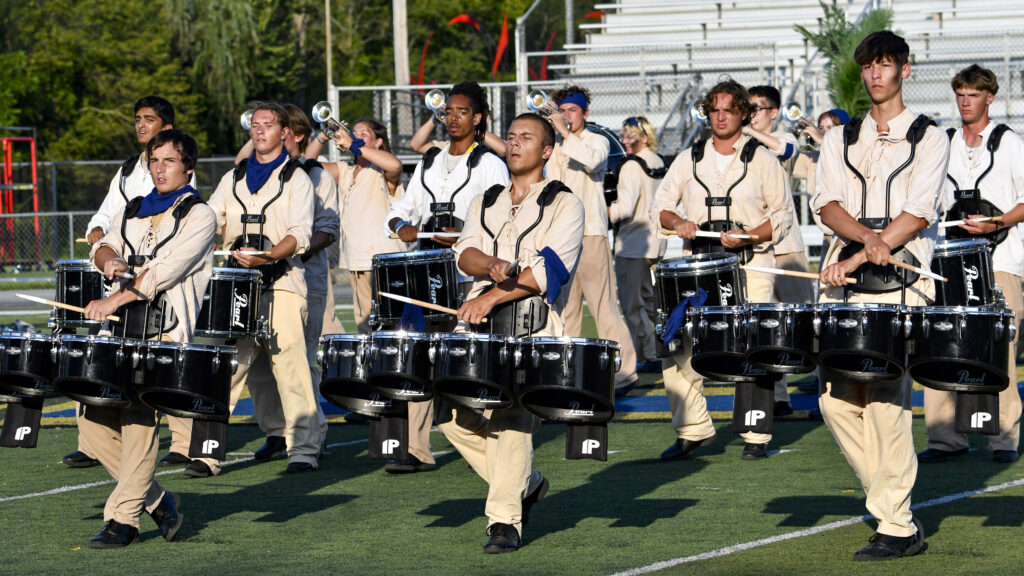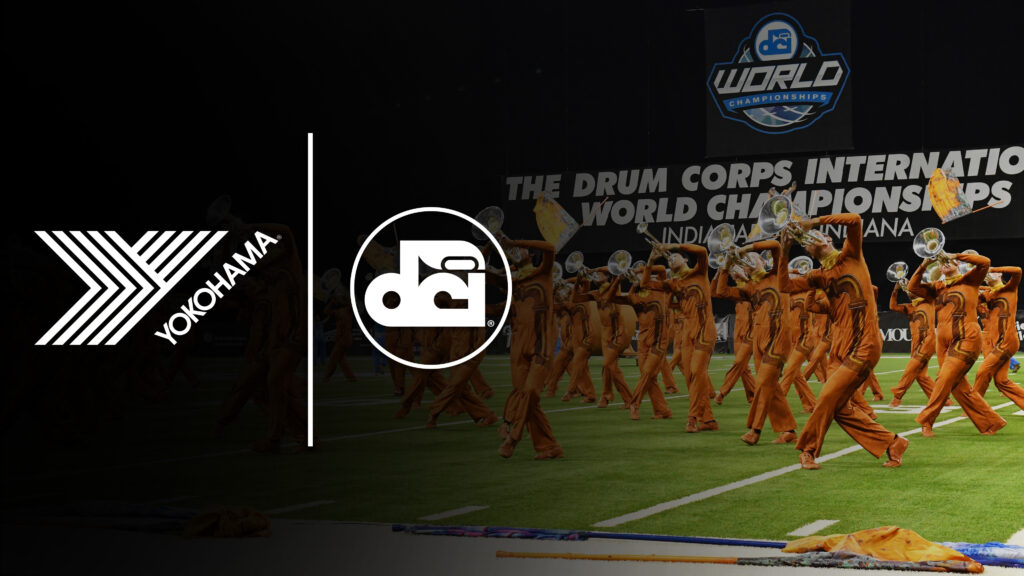
2004 Blue Devils
Performance excerpt of the 2004 Blue Devils.
Afterward, the color guard verbally created the sound of the train’s air brakes releasing, and then the train was once again in motion, with the front ensemble creating the sound of the train picking up steam with the accelerating sound of brushes amplified against the rough head of a large drum to replicate the sound of a locomotive pulling the cars from a dead stop, the chiming of a railroad crossing signal and a rail suspended from a mount clanging against the metal support. A number of mid-voice horns picked up megaphones to create a Doppler Effect inspired train whistle coming near and then going away as drums threatened to tear the tracks apart and brass players accelerated to the point of almost being thrown off the curve in the track heading into “Take the ‘A’ Train.” The show wasn’t over yet, as snippets from earlier moments came back one last time and the corps headed off into the distance. For the World Champions Finals, a surprise was in store: The corps, which had always headed to and halted in the upper right corner of the field all season, turned and went straight into the lower right corner tunnel of the stadium, turning the stadium’s entry point into a railroad tunnel. This week only, you can save on 2004 World Championship Audio and Video Performance Downloads on the DCI Fan Network. Buy the 2004 Blue Devils Video Performance Download. (Available this week only for $3.99. Regular price: $4.99.) Buy the Audio Performance Download bundle of all 12 Finalists from 2004. (Available this week only for $15.99. Regular price: $19.99.) Offer ends Monday, June 13 at 8:30 a.m. ET.

Michael Boo was a member of the Cavaliers from 1975-1977. He has written about the drum corps activity for more than a quarter century and serves as a staff writer for various Drum Corps International projects. Boo has written for numerous other publications and has published an honors-winning book on the history of figure skating. As an accomplished composer, Boo holds a bachelor's degree in music education and a master's degree in music theory and composition. He resides in Chesterton, Ind.





